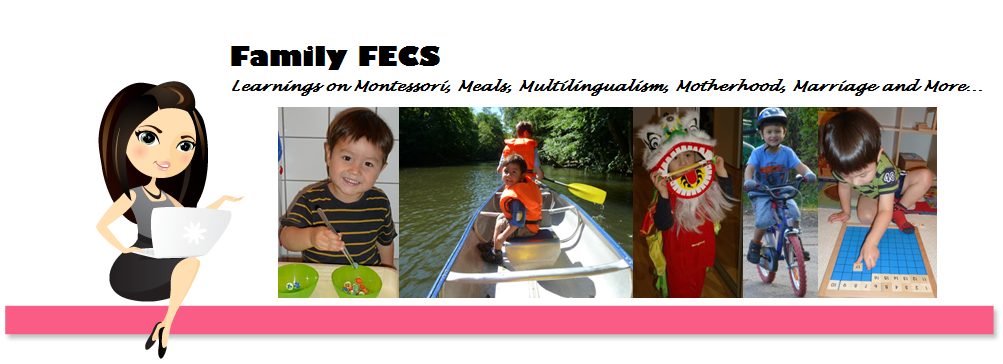This post writes specifically on how to find a good Montessori kindergarten, but it can be applied to finding a good non-Montessori kindergarten as well.
1. Don't just visit the kindergarten, stay and observe
Instead of requesting the kindergarten for a "rundvisning" (tour of the school in Danish), ask if you can observe a class for 1-2 hours. The children will go about their work and play, while the observer sits quietly, keeping interaction to a minimum so as not to disturb the children's concentration.
For example, Montessori schooling is known to produce in attention, or at least that is one of the major goals of Montessori schooling. Observe and see if this is true in the kindergarten you visit.
Nowadays, many kindergartens are certified. It does provide a sense of security choosing a kindergarten which is certified by for example, the Association of Montessori Internationale (AMI) (http://www.montessori-ami.org/), but it is no guarantee. There are many excellent Montessori shools which are not certified, because they do not seek distinction. Thus, don't just select a kindergarten, because it is certified, visit the kindergarten. However, don't just visit a kindergarten, stay to observe the class.
I made the mistake of just visiting, instead of requesting to stay as an observer of a class, when I was picking J's daycare. I paid the price of selecting the wrong daycare, and was really sad about it. Thankfully, God answered my prayer, when I managed to convince the county to allow me to change the daycare. When selecting the next daycare, I had the opportunity of being a secondary observer, i.e. through the eyes of a friend of mine, whose daughter attended the same daycare. It is difficult to get a feel of the school, without having the opportunity of observing a class. But it is a rare opportunity to be allowed to stay and observe a class.
If a kindergarten does not allow you to stay on to observe, it speaks volume of the school in a negative way. So, it may be a signal for you to go on looking around for other kindergartens. In Singapore, where many kindergartens are privatized, it is easier to find kindergartens which would allow observers. It is a uphill task for me in Denmark to be able to find one, since it is common for "rundvisning", but not observing, but I will try.
2. Observe a "Teacher's Presentation Session" and "Work Period"
Ask the principal usually what time of the day, the teachers make presentation/demonstration to a group of children as part of teaching the children new things. Usually this is done in the morning. If the kindergarten has such a schedule, it is a good sign. If not, it may signal questions about the quality of the kindergarten. Proceed to ask for permission to watch a teacher's representation of the work and then the permission to observe the children at work, i.e. "work period". In many kindergarten, usually in the morning, the teacher would present and demonstrate a new activity. Observe and see how he/she represent the activity.
In an excellent kindergarten, you would find teachers working with one or two children at a time, advising, presenting a new lesson or quietly observing the class at work.
2. Ask Questions
According to the book, Montessori: The Science Behind the Genius, the following questions reflect what one should look for when observing in a Montessori Classroom:
1. Is there a feeling of peace? (Beware if you see chaos and an disorganized atmosphere, with toys splattered all around)
2. Is the classroom orderly, structured and neat?
3. Is there a variety of different kinds of work being done?
4. Is there an absence of worksheets and workbooks?
5. Do the children seem to be relaxed and happy?
6. Do the children seem to hae a sense of purpose?
7. Are the children kind and courteous with each other?
8. Are the chilren concentrating very hard on their work?
9. Are the children appearing to work seriously even while some are casually carrying on conversations with others?
10. Does the teacher appear to be constantly aware of the whole room, intervening only when children seem aimless or nonconstructive, or are bothering others?
11. Is the teacher sensitive to the timid and shy ones, trying to encourage them to try out activities or to speak up, while the self-confident and bold ones to flourish and not get bored, but yet not dominating all the attention?
In the very best kindergarten, the answer to all the above questions is yes
References:
- Montessori: The Science Behind the Genius by Angeline Stoll Lillard
- How to Raise an Amazing Child The Montessori Way by Time Seldin
Useful Links:
http://www.youtube.com/watch?v=-kjr9FmMXv8
http://www.honeykidsasia.com/singapore/schools-cat/child-centred-preschools-in-singapore-white-lodge-preschool-parent-review/

No comments:
Post a Comment